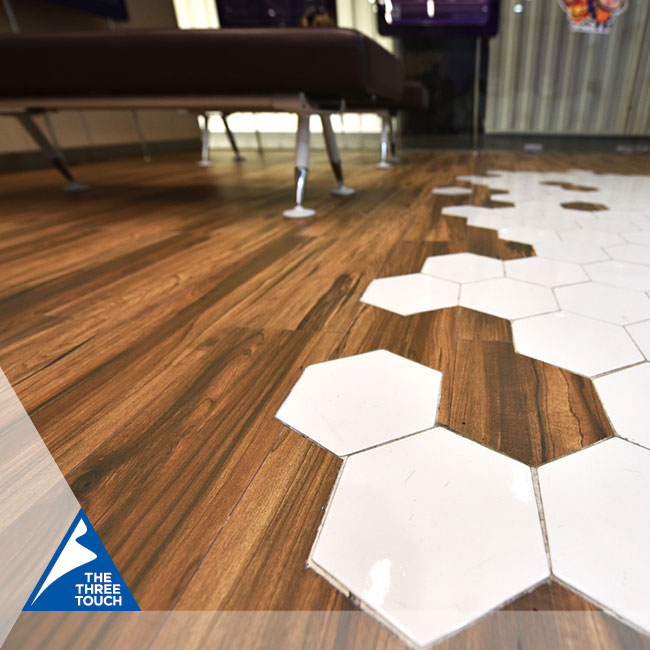How to install Engineered wood flooring over tile วันที่ 26/11/2014 01:21:44 AM ,ผู้เข้าชม : 3893
How to install Engineered wood flooring over tile

Engineered wood is made with 3 to 5 layers of hardwood. Every layer is stacked in a very cross-grain configuration and secure along beneath heat and pressure. Engineered wood flooring is a smaller amount doubtless to be laid low with changes in humidness and may be put in any respect levels of the house. The best built wooden floors are designed having 3-12 multiple ply layers that are cross bedded, affixed and ironed along.
Why we use engineered wood in flooring over tile:
The advantages of engineered wooden built floors embody a lot of resistance to higher wet levels that adds to their attractiveness to use in damp basements or in regions of the country that have higher ratio levels. Also, built flooring (excluding the newer Click Lock flooring) will be direct glued-down over concrete slabs higher than or below grade or pinned down over a wood subfloor. There are a mess of built floors on the market these days that are created victimization the simplest raw materials on the market, for the possible emptor WHO needs a high quality product for his or her home.
Way to use engineered wood in flooring over tile:
Engineered wooden floors area unit factory-made 2 ways in which, one, wherever the highest surface wear layer is Sliced/Sawn cut from the log like solid wood flooring is. Designed hardwood flooring that incorporates a Sliced/Sawn cut wear layer shows the more true natural look of the wood and finer wood graining. Sliced/Sawn cut designed flooring conjointly permits a thicker wear layer.
How it will be done:
Engineered wood flooring is straightforward to put in. Firstly, it needs abundant less preparation work, and also the planks themselves are additional versatile. The built wood is nailed over joists, and no laminate sub-flooring is needed earlier. Plus, because the high layer has been sanded and sealed earlier, once the ground is down, you'll be able to walk on that quickly. Alternative floor sorts need finishing, therefore you have got to attend to truly use them, which may cause inconvenience.
We may go thronging some process to install engineered wood flooring over tile.
- At first its need to Marge the area of subfloor for installation and now fill prevailing cracks or holes with wood putty or concrete combine and then reckoning on the fabric.
-Determine what quantity material we would like by measurement the length and dimension of the area. Multiply these numbers along, and then add V-day to the present range to account for future repairs, broken planks, or installation mistakes. Designed flooring is obtainable at the most home improvement stores or from your native flooring contractor.
-Foam can create the ground softer to run on whereas serving to deaden the sound of footsteps.
-Begin like egg laying your built wood planks on the longest encloses the space. Leave a 1/4-inch gap between the plank and therefore the wall to account for growth of the fabric.
- Snap consequent row of planks into place mistreatment the tongue and groove connectors on the sting of every piece and faucet the sting of every panel.
- Use a power saw to chop items to suit every row.
-Leave another 1/4-inch gap as you reach the ultimate row to permit for enlargement on either side of the space. It’s going to be necessary to chop the planks length-wise to accommodate this spacing.
-Install baseboards or trim round the perimeter of the area to finish the project.
In case of stair, Determine the stairs are clean or staples and free of protruding nail heads and there is no nosing. If there is any of them then it need to remove .Then start work slowly and carefully and clean up the dust and mess. Then cut the designed wood planks for the steps. live the items with a activity tape then cut them with the miter saw. Rip the last row of planking for every step on the table saw. Cut all items of wood before gluing them down.
Need to know:
All Brands of built floors have variations in quality. Their edge may even be off and their end quality might be poor. In this case we'd like to remain far away from names we tend to ne'er detected of and solely use Name whole hardwood flooring from makers that are around for an extended time. They're going to typically stand behind their flooring if one thing ought to get it wrong.
If you would like real wood, the simplest selection is designed flooring. This sandwich of wood veneer affixed to layers of pine or ply board appears and is incredibly stable.
| 
